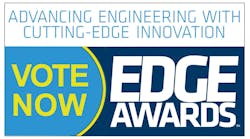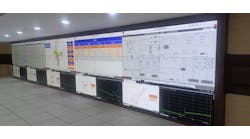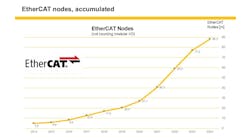Several dozen users, engineers, managers and IT professionals exchanged experiences and best practices on process and plant performance, quality, safety, loop tuning and cybersecurity during NovaTech Automation Summit 2017 on Sept. 18-20 in Baltimore, Md. NovaTech Process Solutions also presented details about its D/3 Version 15 control system and upcoming Version 16, demonstrated its new PCM5 controller and Augmented Manual Procedures (AMP) procedural automation software.
The event's opening keynote address was delivered by Manuel "Manny" Ehrlich, member of the U.S. Chemical Safety and Hazard Investigation Board, who reported that it continues every day to carry out its mission of trying to make processes safer and prevent people from being injured. So far, it's conducted 800 root-cause analysis investigations since it was founded in 1998, and it's achieved a remarkable 78.8% compliance rate along the way.
[sidebar id =1]"We only have 20 people in Washington, D.C., and 20 people in Denver, Colo., so we can't possibly investigate everything that happens," said Manuel "Manny" Ehrlich, board member of CSB. "When Deepwater Horizon happened in 2010, U.S. Rep. Henry Waxman was able to add $2 million to our budget over six years to help us conduct our investigation, but he eventually left Congress.”
Despite its past and present setbacks, Ehrlich reports that CSB has defined five "Drivers of Critical Chemical Safety Change" that are presently needed:
- The U.S. Occupational Safety and Health Administration combustible dust standard and its organizers have long been trying to settle on its precise definition, but Ehrlich adds that many users have already been implementing its useful principles as if it was a standard;
- Modernization of U.S. process safety management regulation, even though much work is still required to make it happen;
- Emergency response and planning effort, initiated in 2016 but lacks funding and knowledgeable participants;
- Preventive maintenance best practices and recommendations need to be developed; and
- Safe hot work practices also need to be developed because Ehrlich reports that 25% of incidents in this area involve lack of knowledge by participants.
"Beyond its investigations, CSB focuses on specialized elements of these drivers of critical safety change," added Ehrlich. "One of the challenges we see users face is the conflict between their hierarchy and structure versus human factors issues. There's a lot of potential danger in not knowing what you don't know. For example, many first responders don't know what expansion ratios are. Of course, many people say, 'I don't want to be a chemist,' but we're not asking them to do that. We just want them to have enough knowledge to keep their butts safe."
Other presentations during the summit included:
Biopharmaceutical manufacturer AbbVie upgraded its almost 20-year-old control system with NovaTech's latest D/3, and achieved advances with everything from new software and process control modules to I/O and switches to gain added reliability and productivity. AbbVie's upgrade of its D/3 control system took it from Version 9.1 all the way up to Version 15, and upgraded 1,200 I/O points and one process control module (PCM) managing 24 fermenter tanks in its product development division.
Poultry feed additive manufacturer Evonik'x processes were monitored and managed by more than 40 drops (each in a cabinet or rack) of Quantum I/O when it opened in 2009. During it 2012 expansion, all new drops were implemented with 8000 Series I/O (manufactured for NovaTech in an OEM agreement with GE Automation and Controls). In all, the plant has about 3,800 I/O points controlled by seven process control modules (PCM). "We needed this upgrade because of frequent S908 communication issues that were causing production losses," says David McBride, automation engineer at Evonik. "Previously, we also lacked HART compatibility, so we wanted to add 8000 Series I/O for better diagnostic and asset management capabilities."
Bob Rice, vice president of engineering at Control Station Inc., showed how his company and NovaTech help users overcome historical trial-and-error loop tuning by using best practices for loop tuning and their six-step D3LO tuning recipe: 1) Find—to identify the controller and specify the design level of operation (DLO) and control objective;
2) Step—that performs a "bump test" and collects dynamic process data; 3) Model—that fit a model to the process data; 4) Tune—to use tuning correlations to calculate tunings based on the model; 5) Test—that implements and tests results; and 6) Document—to document the tuning process.
Manual processes and human error that hinder process applications can be confronted by automating procedural operations with software tools, such as NovaTech's Augmented Manual Procedures (AMP), according to Mike Williams, consultant at Modern Automation Consulting Services LLC.
Steve Gandy, global business VP at exida, reports that cybersecurity can be approached in much the same way risk assessments are done for process safety and alarm rationalization projects. "People sometimes ask whose job is cybersecurity? We say it's everyone's job," he said.
For more coverage visit www.controlglobal.com/articles/2017/live-from-2017-novatech-automation-summit



